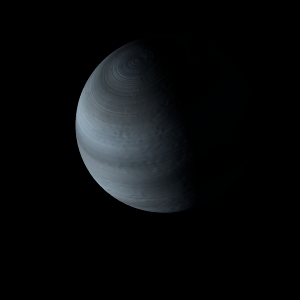|
|
Space Astro
|
Info for exoplanet "Lafer Meti"
| Scientific (actual) data |
|---|
| Name | HD 187123 b |
| Planet status | Confirmed |
| Planet mass | 1.4 |
| Mass sini | 0.555 |
| Orbital period | 3.09658 |
| Semi major axis | 0.044 |
| Orbit eccentricity | 0.0139 |
| Inclination | 79 |
| Angular distance | 0.000852 |
| Discovered | 1998 |
| Updated | 2025-08-13 |
| Omega | 25 |
| Tperi | 52111.7 |
| Publication | Published in a refereed paper |
| Detection type | Radial Velocity |
| Mass measurement type | Radial Velocity |
| Alternate names | HIP 97336 b |
| Molecules | H2O |
| Star name | HD 187123 |
| Right ascension | 296.74° |
| Declination | 34.42° |
| Mag v | 7.86 |
| Star distance | 50 |
| Star metallicity | 0.16 |
| Star mass | 1.06 |
| Star radius | 1.17 |
| Star sp type | G5V |
| Star age | 5.33 |
| Star temperature | 5714 |
| Star alternate names | HIP 97336 |
| Wikipedia article | HD 187123 b |
Back
| |
| Fictional info (?) |
|---|
| Suggested name | Lafer Meti |
| Planet type | Hot gas giant |
| It is a hot gas giant planet with a mass one-thousandth that of HD 187123, but two-and-a-half times that of all the other planets in its solar system combined.
It has the densest atmosphere of any hot gas giants, consisting mostly of H2O. |
| Atmosphere | H2O | 99% |
| Atmospheric pressure | 23 bar |
 |
| No known satellites |
| Google search for Lafer meti |
|
Website by Joachim Michaelis
|
|
|
|